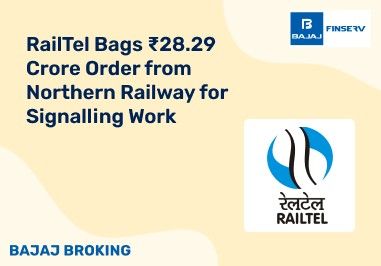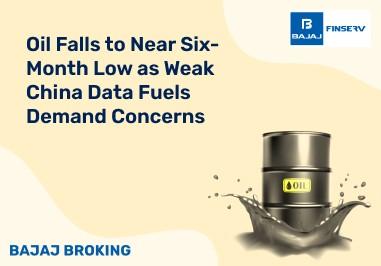BAJAJ BROKING
PDP Shipping & Projects IPO is Open!
Open a Free Demat Account
Trade Now, Pay Later with up to 4x
Track Market Movers Instantly
What Is Intrinsic Value In Share Market?
Blog Summary
- 1Explaining Intrinsic Value of a Share
- 2Calculating the Intrinsic Value of a Stock?
- 3Finding Present Value Of Future Cash Flows
- 4Comparing the Value of an Asset with Other Similar Assets
- 5Possible Changes in Cash Flows Due to Volatility and Uncertainty
- 6Understanding the Challenges of Assessing Intrinsic Value
- 7Exploring Valuation Methods
- 8Summing it Up
This is the term used to describe the true worth of a stock, based on how much money it can generate for its owners in the future. The intrinsic value is not affected by the market’s opinions or emotions, but by the facts and figures of the company’s performance and prospects. To find out the intrinsic share value, analysts use various methods of fundamental research, which involve looking at both qualitative and quantitative aspects of the company, as well as external factors that may influence its growth. In contrast to technical analysis, which focuses on the patterns and trends of the stock price, fundamental research tries to determine the underlying value of the company.
Calculating the Intrinsic Value of a Stock?
There are different ways to do this, but one common method is called the discounted cash flow model or the present value model. This method tries to estimate how much cash the company will generate in the future, and then discount it to its present value. Intrinsic value of a share formula calculation is explained through this example;
For example, if you are buying a house to rent it out for ten years, you would not want to pay more than what you can earn from it in rent and resale. The same logic applies to buying a stock. You would not want to pay more than what you can expect to receive from it in dividends and capital gains. The discounted cash flow model helps you find out this amount.
Therefore, the intrinsic value of a stock is the present value of all the future cash flows that you can get from owning it.
Finding Present Value Of Future Cash Flows
This is the question that the present value method tries to answer. It assumes that an asset’s current value is equal to the discounted value of its future cash flows. One way to do this is to use the discounted cash flow (DCF) analysis, which involves forecasting the cash flows and applying a suitable discount rate to them. The discount rate reflects both the time value of money and the risk of the investment. The sum of the discounted cash flows gives us an estimate of the asset’s intrinsic value.
Also Read: Value Investing
Comparing the Value of an Asset with Other Similar Assets
This is the question that the relative value method tries to answer. It assumes that an asset’s value can be determined by looking at how it stacks up against comparable assets. Two common techniques under this method are Comparable Company Analysis (CCA) and Comparable Transaction Analysis (CTA), which use various ratios and multiples to compare different companies or transactions. The relative value method is important because it shows how the market values an asset based on both its own fundamentals and market movements.
Also Read: Long Term Capital Gains on Shares Explained
Possible Changes in Cash Flows Due to Volatility and Uncertainty
This is the question that risk adjusting the intrinsic value tries to answer. This aspect of valuation is very subjective and requires a combination of art and science. There are two ways to incorporate volatility and uncertainty into the valuation process:
- Discount Rate: This approach uses a higher discount rate for riskier investments, which lowers their present value. The discount rate is often based on the weighted average cost of capital (WACC) of the company, which consists of a risk-free rate (usually the return on a government bond) plus a premium that depends on the equity risk premium and the stock volatility premium.
- Certainty Factor: This approach uses a lower certainty factor for uncertain cash flows, which reduces their net present value. The certainty factor is a probability number that reflects how likely a cash flow is to occur. For example, a government bond has a certainty factor of 100%, while a high-growth company may have a certainty factor of 50%. The certainty factor is multiplied by each cash flow before discounting them using the risk-free rate, which is equal to the yield rate in this case.
Understanding the Challenges of Assessing Intrinsic Value
When it comes to determining a stock’s intrinsic value in stock market, investors should be mindful of the inherent complexities. Here are key considerations:
1. Unique Calculations: Calculating intrinsic value is a personalised process, heavily reliant on making assumptions about a company’s future cash flows. Fluctuations in these underlying assumptions can lead to significant variations in the net present value.
2. Varied Factors in WACC: Similarly, elements like beta and market risk premium play a role in determining the weighted average cost of capital (WACC). The choice of probability factors in these calculations can be quite arbitrary.
3. Future Uncertainty: Forecasting the future is inherently challenging. Different investors arrive at varying valuations for the same asset due to their distinct perspectives on predictions. No universally precise method exists to calculate intrinsic value.
In summary, intrinsic value plays a vital role in assessing a stock’s worth for investment. However, due to the multitude of methods available, it’s crucial to select one tailored to the specific industry and characteristics of the company in question.
Exploring Valuation Methods
Valuation is a fundamental aspect of financial analysis and investment decision-making. Intrinsic value, which differs from market price, forms the core of this evaluation. Various methods are employed to determine the intrinsic value of a stock. Let’s delve into these approaches:
1. Discounted Cash Flows (DCF) Analysis: DCF analysis is the most widely used method for assessing intrinsic value. It involves three steps: projecting a company’s future cash flows, determining the present value of these flows, and summing them to find the intrinsic value. Forecasting future cash flows requires a thorough examination of financial statements and industry trends.
2. Financial Metric Analysis: Another common method is based on financial ratios such as the price-to-earnings ratio. These metrics provide insights into a stock’s intrinsic value.
3. Asset-Based Valuation: This approach calculates intrinsic value by subtracting a company’s total liabilities from its tangible and intangible assets. It is favoured by new investors for its simplicity and independence from intricate cash flow calculations.
4. Dividend Discount Models (DDM): DDM considers the cash component and is a popular choice among analysts. The formula to determine intrinsic value using DDM incorporates factors like Expected Dividend per Share (EDPS), Cost of Capital Equity (CCE), and Dividend Growth Rate (DGR).
Each of these methods offers a unique perspective on intrinsic value, allowing investors to make informed decisions based on their preferences and the nature of the investment.
Summing it Up
Assessing intrinsic value of the stock, provides valuable insights into a company’s financial prospects, offering a true gauge of its worth. For active investors, it’s crucial to grasp the practical applications of calculating intrinsic value. Depending on the available data and circumstances, you have the flexibility to apply any of the strategies discussed earlier. Remember, when evaluating a company’s performance, it’s vital to distinguish between market value and intrinsic value, as they are distinct metrics.
Share this article:
Read More Blogs
Our Secure Trading Platforms
Level up your stock market experience: Download the Bajaj Broking App for effortless investing and trading













